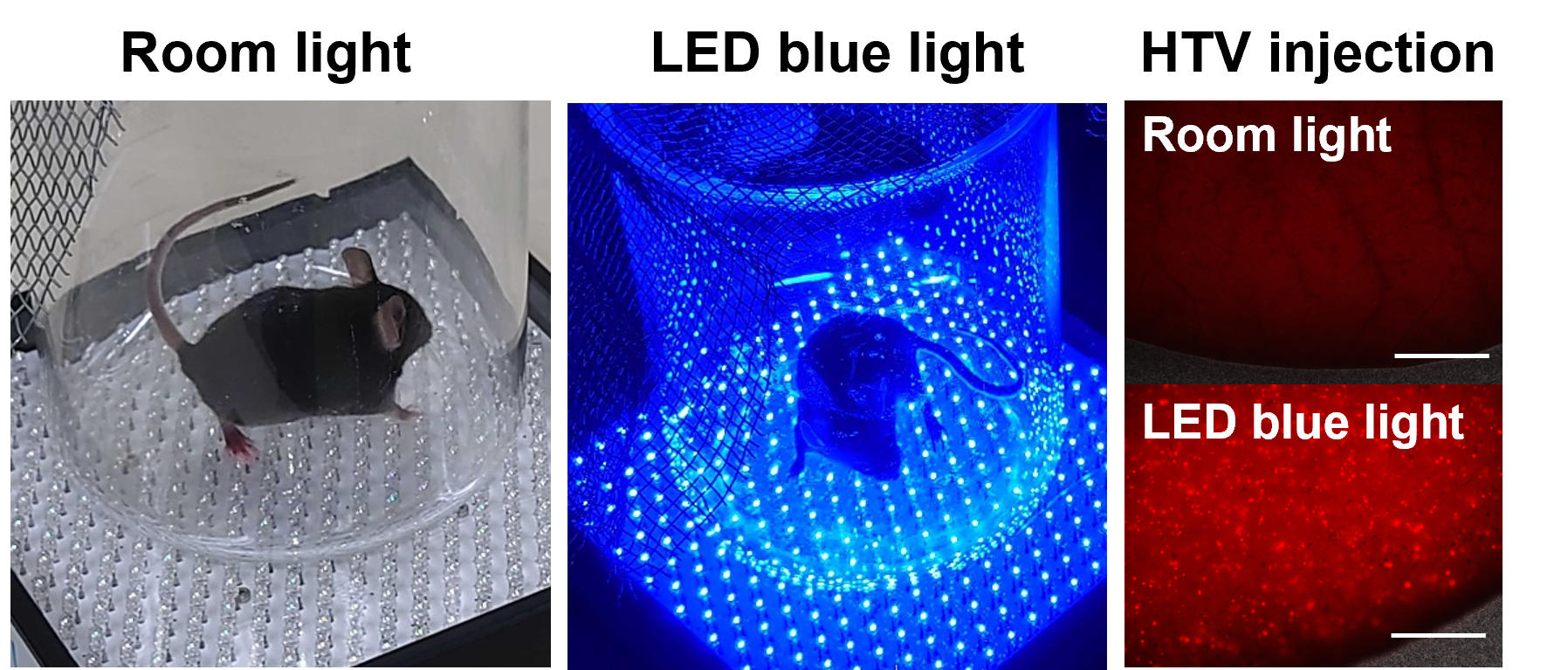 |
March 2022 Mouse of the Month |
A spatiotemporally controllable Cre-driver strain
C57BL6/J-Actb<em1(tetO-PA-cre)ttaka> (RBRC11090)
|
| Cell-specific regulation of gene expression using the Cre/loxP system has been widely used in the life sciences as a tool for analyzing gene function in vivo. In order to achieve tissue specificity, Cre driver mice expressing Cre enzymes under control of specific promoters have been developed. In order to achieve more accurate control of Cre activation with precise time and cell specificity, the method of inducing Cre enzyme expression by tamoxifen administration has been developed. Thus, a lot of innovations have been developed. However, there are still issues to be addressed in terms of specificity, efficiency, and invasiveness. TRE-PA-Cre mice (RBRC11090) is a tTA-dependent photoactivatable Cre driver strain. A tetracycline response factor (TRE) and a light-responsive Cre/loxP system (PA-Cre) are knocked into Actb gene locus. In brief, this strain enables non-invasive, spatiotemporal genetic recombination in vivo by a combination of a Tet on/off system and a light-inducible Cre/loxP system. In the presence of tTA, Cre-N-terminal fragment and Cre-C-terminal fragment, to which a photo-switch protein is added, are expressed. At this stage, the Cre enzyme is in an inactivated state, but upon illumination with blue light (470 nm ± 20 nm), Cre-N and Cre-C bind to each other by Magnet binding and function as an activated Cre enzyme. In near future, TRE-PA-Cre strain will make a significant contribution to the development of life science research because it can control gene expression better and adapt more general purpose than conventional methods. |
| Depositors | : | Takeshi Takarada, Ph.D., Tomoka Takao, Ph.D. Okayama University |
|
| Strain name | : | C57BL6/J-Actb<em1(tetO-PA-cre)ttaka> | |
| RBRC No. | : | RBRC11090 | |
| Reference | : | [1] | Takao T, Hiraoka Y, Kawabe K, Yamada D, Ming L, Tanaka K, Sato M, Takarada T. Establishment of a tTA-dependent photoactivatable Cre recombinase knock-in mouse model for optogenetic genome engineering. Biochem Biophys Res Commun. 2020 May 21;526(1):213-217. |
| March 2022 Saori Mizuno, Ph.D. Contact: Experimental Animal Division, RIKEN BioResource Research Center (animal.brc@riken.jp) All materials contained on this site may not be reproduced, distributed, displayed, published or broadcast without the prior permission of the owner of that content. |





